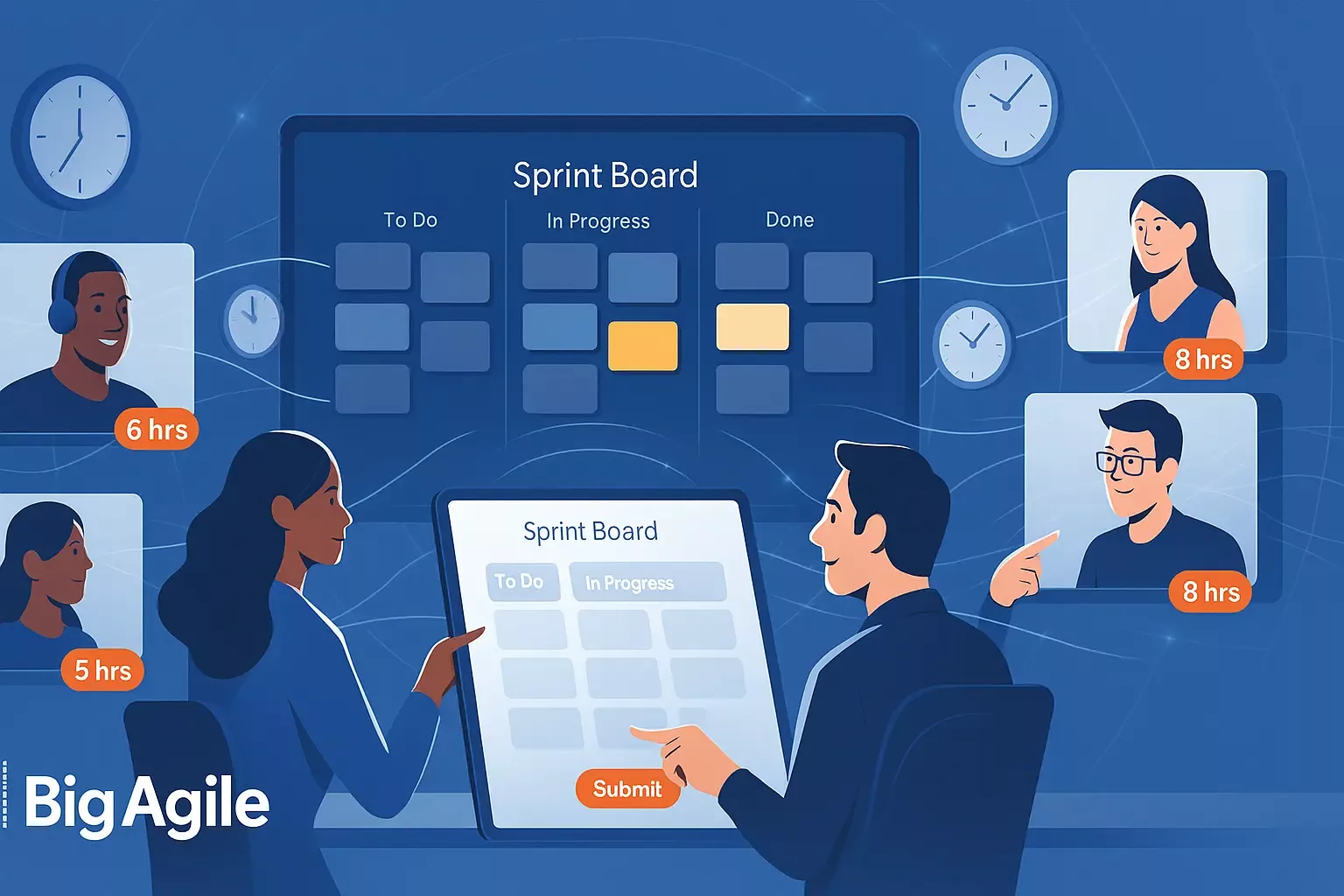
Did you know…
Effective sprint planning for distributed or hybrid teams hinges on a deceptively simple habit: translate every user-story estimate into a realistic capacity commitment for each individual. Full Scale’s approach asks every team member, onshore or remote, to state, in hours, how much they can truly devote to sprint work after accounting for vacation, kid care, ops tickets, and surprise fire drills.
That data keeps the plan sustainable for the team while reassuring far-away stakeholders that productivity hasn’t gone dark behind the Zoom screen. Velocity is a lagging indicator, good, but lagging. What about our capacity THIS Sprint?
Ok, So What?
Traditional Scrum treats sprint scope as a negotiation around story points. On distributed teams, conversation often collapses into wish-casting: managers assume “three weeks = 120 hours,” while reality is closer to 70. By forcing a capacity check-in,
- Teams avoid over-commitment that leads to burnout and roll-overs.
- Product owners get a credible forecast they can broadcast up the chain.
- Trust rises across time zones because progress correlates with the numbers everyone agreed to.
In short, disciplined capacity planning isn’t project-management red tape; it’s the social glue that keeps a globally scattered squad feeling like one team; one capacity.
Now What?
- Run a “training-wheels” sprint. Ask each developer to log actual sprint hours vs. their commitment. Debrief the gap; calibrate before managers see the sheet.
- Automate the math. Use a shared spreadsheet or a Jira plug-in that subtracts PTO, standing meetings, and support tickets from base capacity so nobody (including you) has to fiddle with formulas at 2 a.m. Manila time.
- Pair capacity with velocity. Once the team’s hours-based velocity stabilizes, experiment with phasing out hour logging, just as a child eventually removes the bike’s stabilizers.
Questions to think about
- Where does your current sprint plan rely on optimistic averages rather than explicit commitments?
- How might transparent capacity data change conversations with remote executives who fear “outsourcing ≠ output”?
- When hours stabilize, will you switch to story points or stay with a metric the business already understands?
Give us one focused hour and we’ll surface the hidden constraints, untangle stalled workflows, and equip your people. Our private coaching sessions compress months of trial-and-error into a single, high-impact conversation.